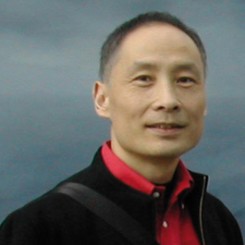This topic reflects international art themes that have been driven largely by Western art criticism discourse in recent years. Identity issues emerged in contemporary art in the West in the 70s and 80s in the political and social context of the West’s multiculturalism. The discussion of ‘identity’ in the contemporary art discourse usually related to cultural identities and evolved over the years due to political, economic and social changes.
However, a forum to discuss identity issues in the context of society or art is different from getting a group of artists together to produce artworks related to a theme or topic. This kind of mechanism in contemporary art development has been debated regularly in recent years due to a trend in curatorial practices at many major international art events to commission selective artists to produce ‘content’ under the event’s curatorial theme.
Accordingly, workshops involving artists like this one in Shanghai somehow can be seen as a social study experiment. The process is like dipping a bunch of cloth into colored water and then pulling it out to see the level of staining and compare the difference with the other pieces of cloth.
One must be careful. In China, there have been similar forms of the “study group” 学习班 in the past and which are now called “discussion sessions” 讨论会. These are implemented by the China Communist Party and the central government to promote party theory and new policies. Intellectuals and artists have also been called upon to participate in such exercises in the expectation of producing future works in line with the party theory. The method is well known as “brain washing” 洗脑.
One most important characteristic of contemporary art is the artist’s individual consciousness and inner feelings about all matters of reality. It is so to say “free spirited.” Under such a workshop structure, one has to ask how much these important values of impulse from independent thinking would be compromised, and what would be missed in the artworks produced under such conditions.
Regarding their identity as ‘Chinese artists’ working in the field of ‘contemporary art,’ generally speaking, most (Chinese) artists would agree that they and their artworks have a strong identity; during the international contemporary art discourse they have always been identified as Chinese contemporary artists and their work as Chinese contemporary art. No matter that they moved, mutated and disturbed in any circumstances.
So the so-called identity issue of Chinese artists is not a major concern except for some individual cases. But that does not mean that there are no identity issues in China. It is noticeable that the topic related to identity has not been widely discussed or encouraged in China. Is this because it is simply a Western driven art dialogue? Does the subject matter have relevance in china? Or is it marginalized because of its political and social sensitive implications?
The participating artists will exhibit their work at the ddm warehouse from 7 September 2010. It will be interesting to see how the symposium affects their work.
